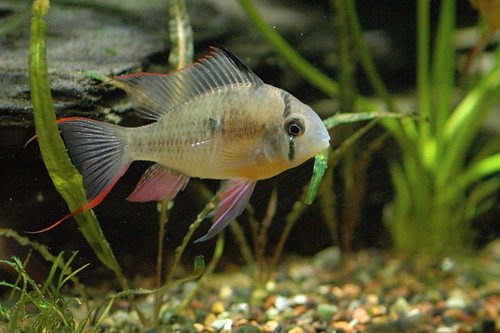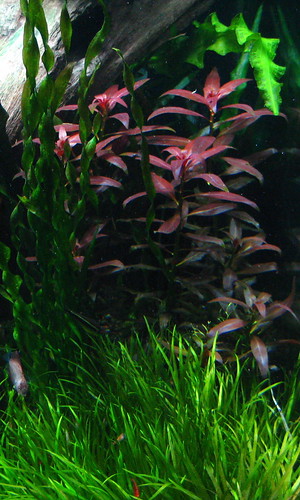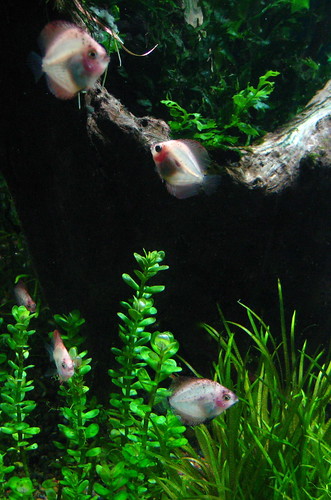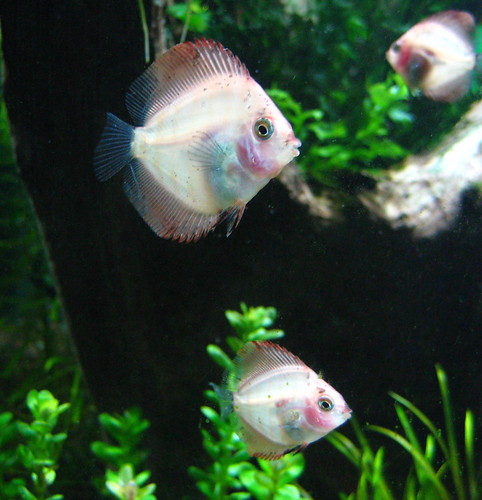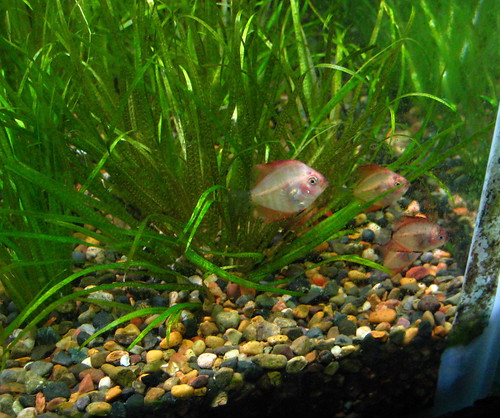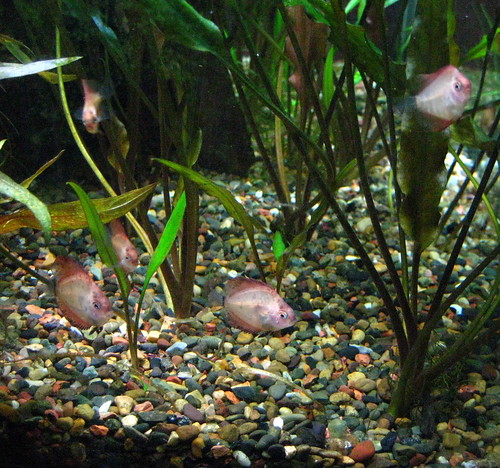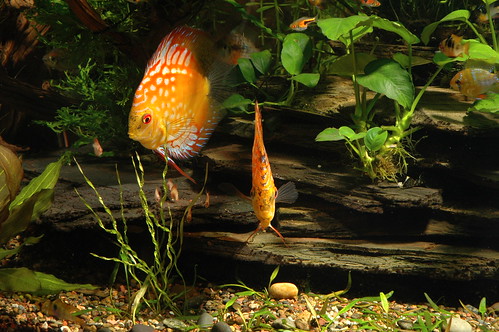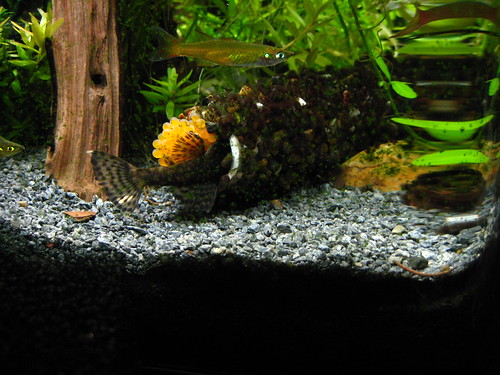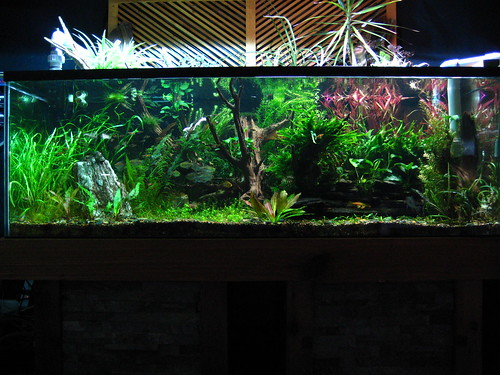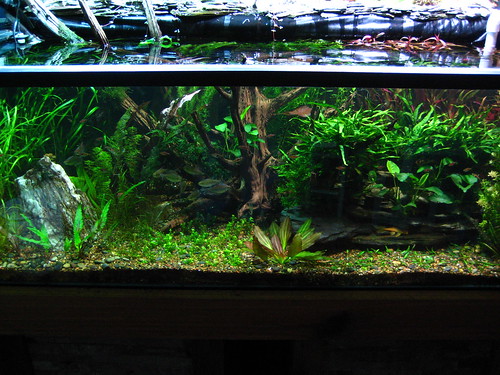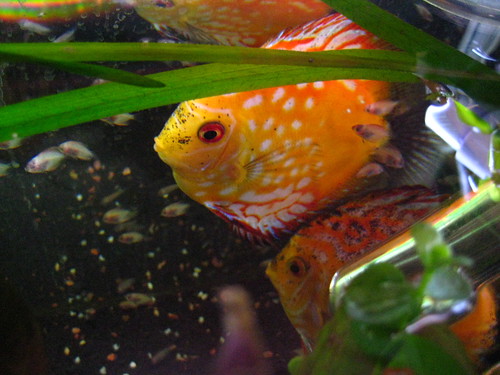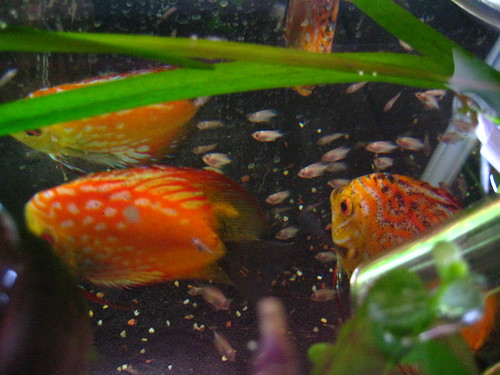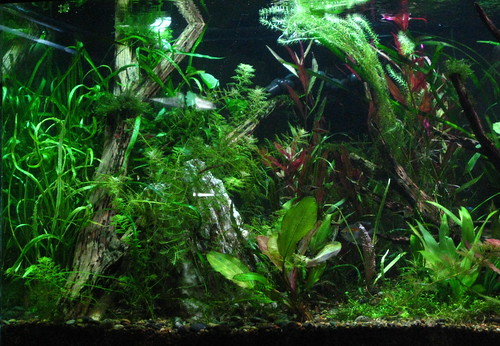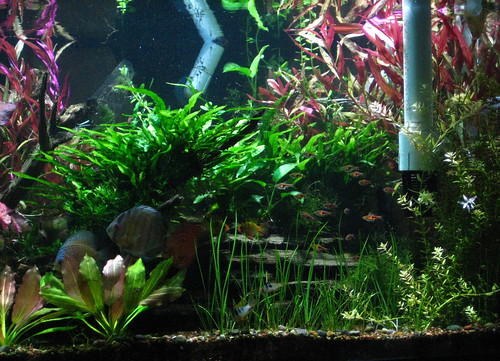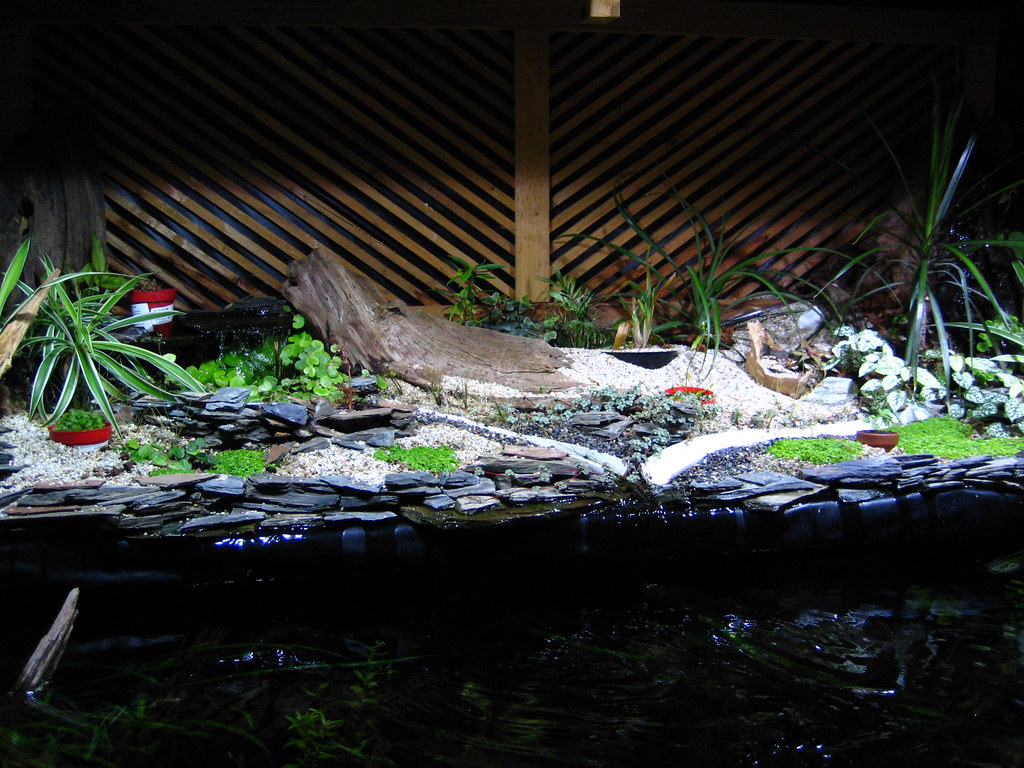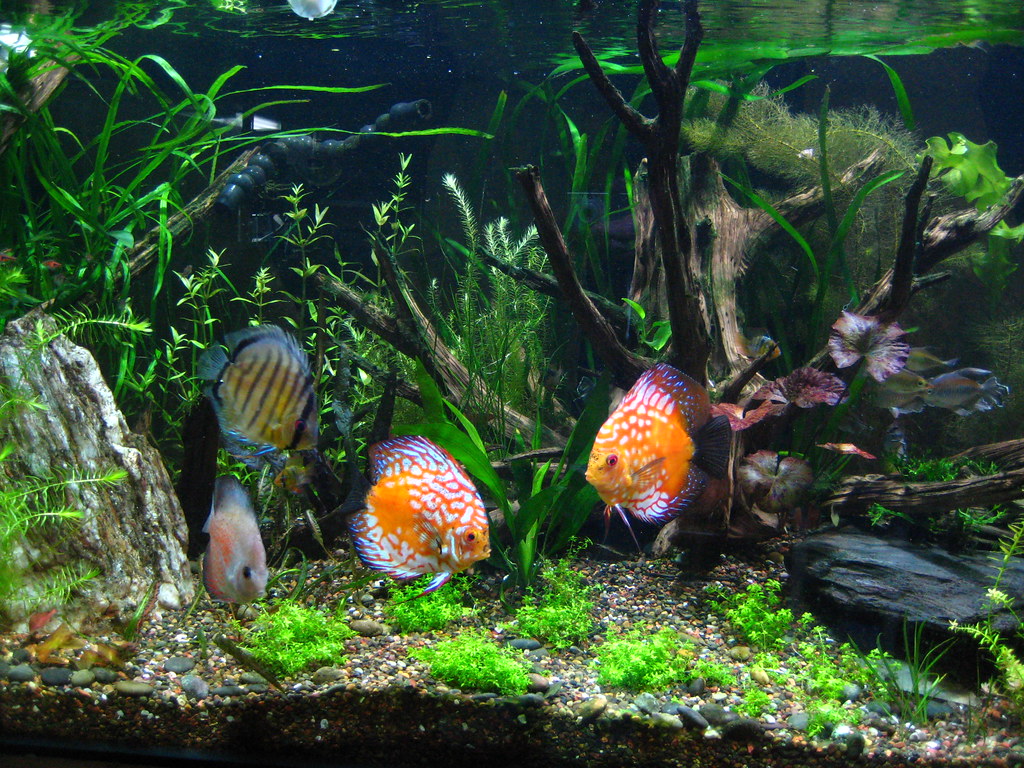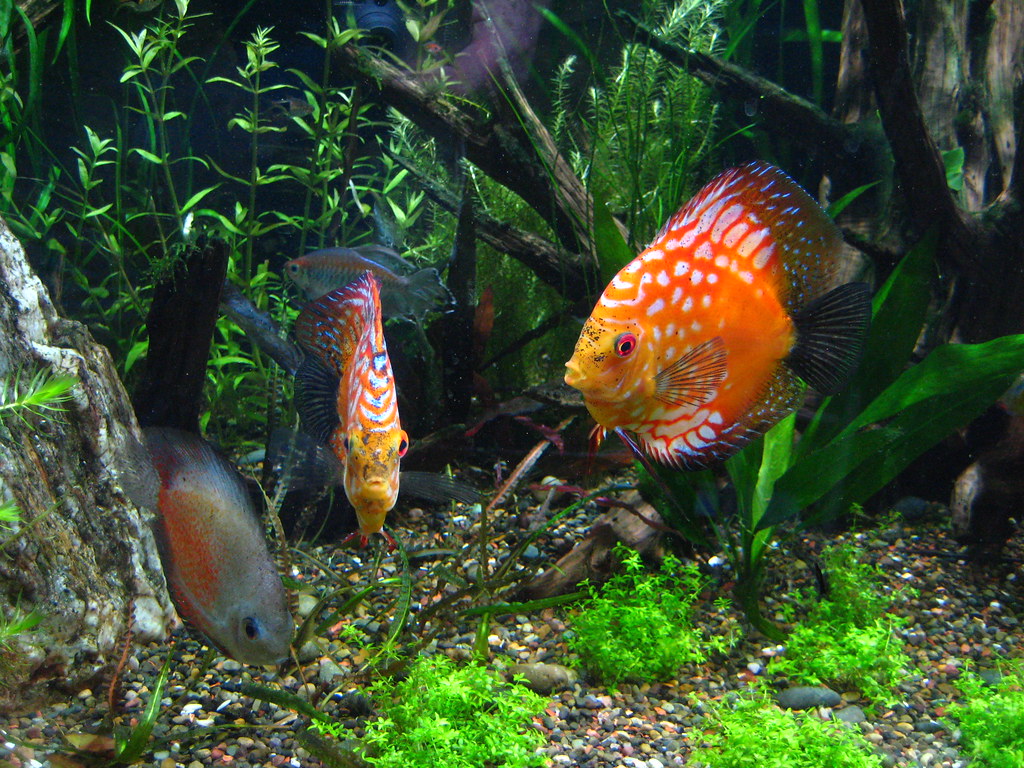
Some time ago, a pair of our Discus paired up and started spawning in the 240. They kept eating the eggs once they reached wiggler stage ( not unexpected ), but they were persistent so finally, we decided to set up a spawning tank for them. In order to make transferring them back and forth as simple as possible, and minimize stress on the fish, we set up a 20 gallon tank next to the 240 with a siphon to fill the 20, and a small pump running back into the main tank so the tank turned over 3-4 times an hour. This gave them identical water conditions, and almost identical lighting conditions, as well as making maintenance simpler, and giving us a huge buffer against unexpected changes in water conditions ( 260 gallons instead of 20 ).
For those of you who aren't familiar with them, Discus are great parents who have evolved a very unique means of rearing their young. They are usually found in stretches of water that have little in the way of infusorians and the other micro foods fry need to survive their first several weeks of life. In order to assure that their spawn don't starve in those early weeks, they have evolved to produce an unusually thick slime coat on their sides that the fry can feed on instead.
This works very well in the wild, and it makes for a great experience to witness as an aquarist, but in the close confines of a tank it can lead to undue stress. In an aquarium, survival rates are much higher and the parents can not easily escape the fry when they get too old and too big. As a result, the fry can begin to strip away the slime coat faster than the parents can produce it, leading to fin and scale damage seriously high stress levels. In order to avoid this, it is often necessary to separate the parents and the fry after 2-3 weeks.
Transferring the parents was difficult. You can see the layout of the 240 in an earlier post - it is not conducive to catching fish that do not want to be caught. After the move, they didn't seem inclined to spawn for the first couple of weeks. Then, about 3 weeks ago they had a small spawn, but apparently still felt nervous enough to eat the eggs.
However, last week, there was another spawn that went to wigglers, and now we have a small school of fry following the parents around. Many 'serious' breeders will probably laugh at the fact that the spawning tank has a substrate and is heavily planted. However, since we aren't commercial breeders, and maximum yield from each spawn was not really a major priority for us, and we have entirely too many plants anyway, we saw no reason to needlessly subject them to the stress of a bare tank.
